Citroen DS (1955)
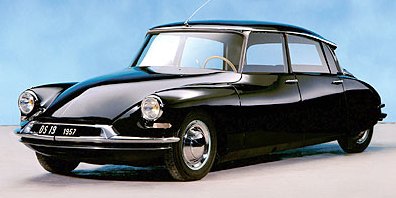
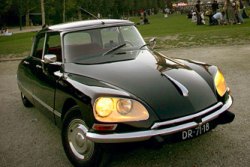
Left: the original DS; Right: 1967 facelift revised the headlamps


| Since
the days of Traction Avant Citroen had been the technology leader in
the motor industry. This advanced image was pushed to the peak in 1955
by DS. The DS introduced many technologies well ahead of its time, such
as height-adjustable hydro-pneumatic suspensions, hydraulic servo
brakes, semi-automatic gearbox, power steering, front wheel disc brakes
and steering headlamps. Unbelievably, some of its advanced concepts had
just begun popular very recently. Today, most automotive historians
recognize the DS as the most technological advanced car (compare with
contemporary cars) ever appeared in mass production. After 10 years of secret development, the DS made its ground-breaking debut in the 1955 Paris motor show. People attending the show must be astonished by its space-age design. In fact, calling it "space-age design" was probably inadequate, because it was born some 6 years before the first man entered space ! the DS was designed by Flaminio Bertoni like Traction Avant and 2CV, but it lifted Bertoni to new height of his career. It looked like a shark, with a sharp nose and a teardrop shape to achieve very low aerodynamic drag while depart it from contemporary saloons. 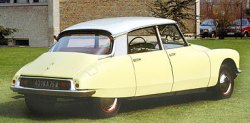 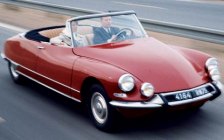 The interior design was no less amazing. It had a radical instrument panel and an unique one-spoke steering wheel to avoid blocking the instrument reading. As all wheels were pushed to the corners, the 4.8-meter long car had an astonishing 3.1 meters wheelbase, hence limousine level of rear legroom. The long wheelbase also improved ride comfort. Like its predecessor Traction Avant, the DS was front-wheel drive to save space from the cabin. However, the real technical breakthrough was the world's first hydro-pneumatic suspensions. Each corner was independently suspended by a sphere containing gas and oil in place of spring and damper respectively. A hydraulic system allowed the driver to adjust the ride height by up to 6 inches - raised it to run over rough roads or lowered it at high speed to reduce drag and increase stability. Save the electronics, it had no difference in concept to the air suspensions serving today's top luxury cars. The DS was therefore renowned for super-comfortable ride. It ate road irregularities at ease, reinforcing French car maker's reputation in ride quality. Apart from the suspensions, many parts of the DS was driven by the central hydraulic system, such as the power steering, the high-pressure servo brakes and the hydraulic clutch. All these were first applied to a production car. Besides, the transmission was a semi-automatic - the hydraulic clutch engaged and disengaged automatically after the driver touching the gearshifter. This sounds more like a technology of the 1990s. Another futuristic technology was the steering headlamps - the lamps steered when the car turned into corners to allow better view to the corner. Other car makers have just started using the same concept very recently. 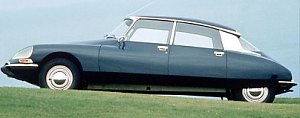 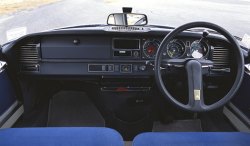 The weakest link of DS was engine. The company originally planned to build a new V6 for the car, but after spending too much budget on the other technologies, Citroen killed the idea. Therefore throughout its life the DS was powered by some unsophisticated push-rod four-cylinder engines derived from Traction Avant's. It was initially offered in the form of 1911cc and 75hp, then upgraded to 83hp, and then joined by a 2175cc 109hp. Although the low drag body enabled very good top speed, the sluggish acceleration never matched the premium price the car asked for. The DS survived for 20 years and sold close to 1.5 million units, quite remarkable for a premium price model. When it left the world in 1975, it was still edge-cutting in many areas. After it gone, Citroen was sold to the conservative Peugeot. Since then it had never quite regained its technology leadership. Therefore DS was widely seen as the peak of Citroen. |
|
|
|
Citroen
DS21 |
|
|
|
All: 1955-75 |
| No. produced |
Total: 1,456,115 units |
Total: 1,456,115 units |
|
|
|
Front-engined, Fwd, 4M |
|
|
|
Inline-4, ohv, 2v/cyl |
|
|
|
2175 cc |
|
|
|
109 hp |
|
|
|
128
lbft |
|
|
|
1343 kg |
|
|
|
112 mph* |
|
|
|
11.8 sec* |